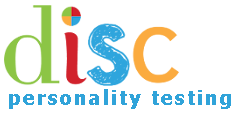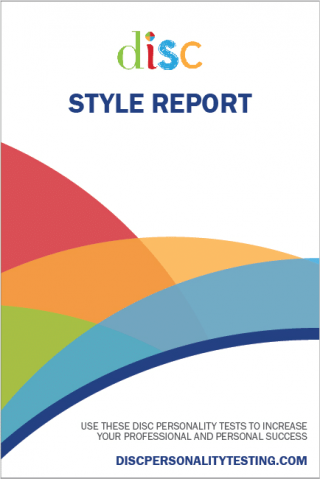When we speak about DISC Behavioral styles, we recommend speaking about style blends rather than focusing solely on a person’s highest trait. Most people will show some of all four DISC style types as they connect, communicate, and interact with other people. They will have more of some traits and less of others, and they will probably have some of all four traits.
Looking further, we see that only a small percentage of people have a behavioral style blend that is only one High-DISC type with three low types (although it does happen for about 5% of people). Most people (about 80%) have two High-DISC types and two Low-DISC types in their personal behavioral style blend.
For you, this means that one DISC type may be the highest of the four in your style blend, and you probably have at least one secondary DISC type which is also high (it’s just not as high as your primary style).
Your secondary type supports and influences the predominant type in your style blend. We represent your style blend with your primary style, a slash, and then your secondary style(s). For example, C/D would represent a Cautious primary style and a Dominant secondary style.
We said that most people have at least one secondary trait. As we said, this is true for about 80% of people and that about 5% of people have only one High-DISC style. So that we don’t forget the remaining 15%, let’s fill in some missing information.
About 15% of people have two secondary traits that support and influence their primary behavior trait. This means that they have three High-DISC types and one Low-DISC type in their style blend
When you consider this blending of behavioral styles and different degree of each type in different people, you can easily see how the four primary traits can be used to understand the large variability among people. Using the four basic style types, we can create forty-one generalized type blends with variations of degree within each basic blend type
The good news is that you don’t have to remember all 41 style blends and descriptions to use the DISC model to improve your ability to interact with people. It’s really much simpler than that, and that’s why we use it and recommend it to others. When you learn to understand the four basic types, you can use them as a way to frame your interactions with others to become more effective. From a simple model, you really can build the ability to connect and communicate with lots of people more effectively.
Understand the four basic types, and you can use them as a way to frame your interactions with others to become more effective. Learn more with a full DISC assessment and report.
Click here to learn more.


according to my first result, I’m a level person. It is too stated that my combination is rather rare, hence, I wish to know if such combination is really possible or is there a problem with me. I have also check with my whole class and all my friend but it seems like I’m the only one with such result.
Great question!
First, there is absolutely nothing wrong with you. The Level style profile is perfectly normal. It is just fairly uncommmon. By uncommon, I mean that relatively few people (compared to the other style blends) have this combination.
The level style just says that none of the four DISC types is a strong motivating or driving factor for you.
Like every style blend, this has both pros and cons. The good part of the Level blend is that people with this combination of traits are often very flexible and can easily adapt to many situations and people.
The potentional challenge (we use the phrase “Blind Spot” in our full DISC Assessment) is that no single need or motivator really pushes you forward or motivates you to action. This is different from saying that you are not motivated. It’s just that there may not be a strong primary motivator for you.
The key point is that the Level style blend is one example of a perfectly normal blend. There is nothing wrong with you.
Thanks for asking!
Guy
I’m another LEVEL! Although rare, we’re not *that* rare. At my workplace of about 60-70 people, there are 2 LEVELs.
I have to say that getting this result and hearing what it meant was an enormous relief to me. It identified my chameleon nature in different social settings and reassured me that I was not a phoney or a manipulator or willfully contrary. The way I see it is that I’m providing balance in any group or partnership by noticing the role that is under-represented and filling it.